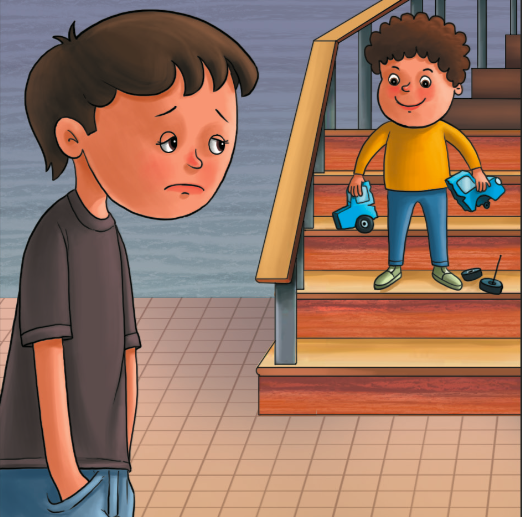
Sadness is an emotional pain caused by significant events in a child’s life. It’s a common feeling, often triggered by seeing someone else in pain or need. Sadness manifests through various traits such as frowning, pessimism, loneliness, irritability, and crying. While sadness is normal, it can sometimes become extreme and may require professional intervention.
Common Triggers of Sadness in Children
Children may feel sad due to:
- Conflicts with friends
- Being rejected or not accepted by peers
- Parting with loved ones
- Losing someone special or something sentimental
- Not achieving a desired goal, such as visiting a place or receiving a gift
- Losing a game or a match
- Seeing a loved one sad
Sadness can be intertwined with other emotions like anger, fear, happiness, frustration, desperation, and regret.
Helping Children Cope with Sadness Through Encouragement and Support
- Encourage children to speak about their feelings.
- Urge them to share their sadness with a trusted adult or friend.
- Teach them to identify the cause of their sadness.
- Show them ways to reduce pain and distract themselves.
- Educate them on behaviors that may cause pain to others.
Instructions for Children – When a Friend is Sad
When a friend is sad, children can:
- Ask how their friend feels.
- Inquire about the reason for their friend's sadness if the friend is willing to share.
- Offer comfort.
- Distract the friend with activities like playing, reading, singing, or watching a movie.
- Inform an adult if the sadness persists.
If a child's sadness negatively impacts their mental and physical health and standard consolation methods fail, it's crucial to find the underlying cause and explore new ways to uplift the child. If all else fails, seeking the intervention of a mental health specialist may be necessary.
Understanding and addressing sadness in children is vital for their emotional well-being. By providing support, encouragement, and appropriate intervention, we can help children navigate their feelings and develop resilience.